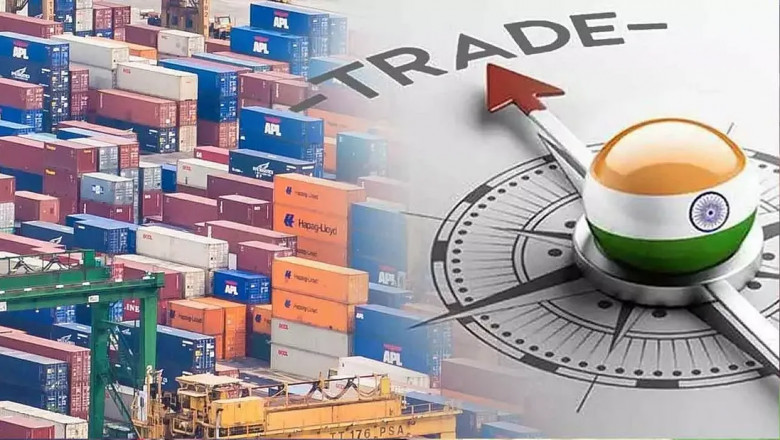views
The Indian Information Technology (IT) sector has long been a jewel in the country’s economic crown, a powerhouse of innovation and a significant contributor to its GDP and employment. However, in the increasingly turbulent waters of global trade, marked by escalating trade wars and tariff threats, the question arises: can this vital sector weather the storm?
The first quarter of 2025 has painted a mixed picture. While India’s IT giants continue to secure major deals and showcase technological prowess, the undercurrent of global economic uncertainty and protectionist sentiments is palpable. Recent reports of foreign portfolio investors (FPIs) offloading significant amounts of Indian IT stocks, citing concerns about a potential US economic slowdown — a key market for Indian IT services — serve as a stark reminder of the sector’s vulnerability to international headwinds.
The primary concern stems from the interconnected nature of the global economy. Trade wars, even if not directly targeting IT services, can trigger a slowdown in major economies like the United States and Europe. This, in turn, can lead to reduced IT spending by businesses in these regions, impacting the revenue streams of Indian IT companies. Companies might postpone large-scale digital transformation projects or become more cautious with their outsourcing budgets.
Furthermore, the specter of technology decoupling, particularly between the US and China, adds another layer of complexity. While Indian IT firms haven’t been directly caught in this crossfire, increased geopolitical tensions and restrictions on technology transfer could indirectly affect their global operations and partnerships. The need to navigate different regulatory landscapes and compliance requirements in a fragmented technological world presents a significant challenge.
However, it’s not all doom and gloom. The Indian IT sector possesses inherent strengths that could help it navigate these challenges:
- Diversified Service Offerings: Indian IT companies offer a wide range of services, from software development and maintenance to business process outsourcing, cloud computing, and cybersecurity. This diversification can provide a buffer against downturns in specific areas.
- Cost Competitiveness: India remains a cost-effective destination for IT services, a crucial factor for businesses looking to optimize their budgets during economic uncertainty.
- Talent Pool: The large and skilled IT workforce in India continues to be a major asset, providing the capacity to handle complex projects and adapt to evolving technological needs.
- Focus on Digital Transformation: The global trend towards digital transformation continues unabated. Indian IT companies, with their expertise in emerging technologies like AI, machine learning, and IoT, are well-positioned to capitalize on this demand, even if the pace slows down temporarily.
- Expanding Domestic Market: While the US and Europe remain key markets, the burgeoning domestic Indian market offers a growing avenue for IT services. Government initiatives towards digitalization and the increasing adoption of technology by Indian businesses provide a cushion against external volatility.
- Agility and Adaptability: The Indian IT sector has historically demonstrated agility in adapting to changing market dynamics. Their ability to quickly reskill employees and offer new solutions can be a significant advantage in a turbulent global environment.
Strategies for resist in the Storm:
To effectively navigate the global trade storm, Indian IT companies need to focus on:
- Further Diversification of Markets: Reducing reliance on a single dominant market by actively exploring opportunities in other regions like Asia-Pacific, Latin America, and the Middle East.
- Strengthening Value Proposition: Moving beyond cost arbitrage and focusing on providing high-value, specialized services and innovative solutions.
- Investing in Emerging Technologies: Staying ahead of the curve in areas like AI, cybersecurity, and cloud computing to cater to evolving client needs.
- Building Stronger Client Relationships: Fostering deeper partnerships with clients to become indispensable strategic partners rather than just service providers.
- Prudent Financial Management: Maintaining healthy cash reserves and optimizing operational efficiencies to withstand potential economic downturns.
In conclusion, while the global trade storm presents undeniable challenges for the Indian IT sector, its inherent strengths, adaptability, and the ongoing global demand for digital transformation provide a strong foundation for resilience. By proactively diversifying markets, enhancing their value proposition, and focusing on innovation, Indian IT companies can indeed weather the storm and continue to be a significant force in the global technology landscape. The coming years will test their mettle, but the sector’s track record suggests a strong capacity to navigate these turbulent times.






















Comments
0 comment